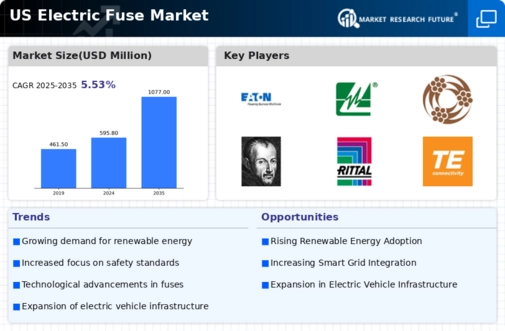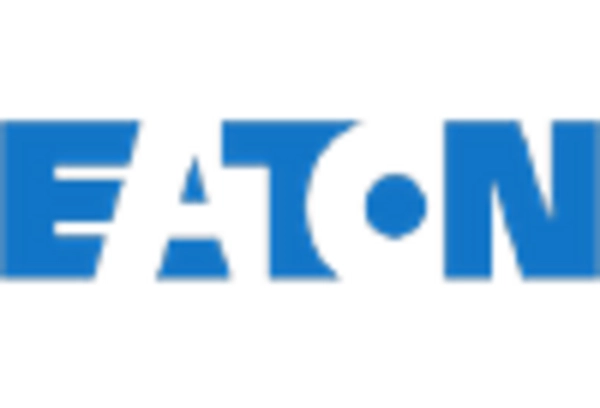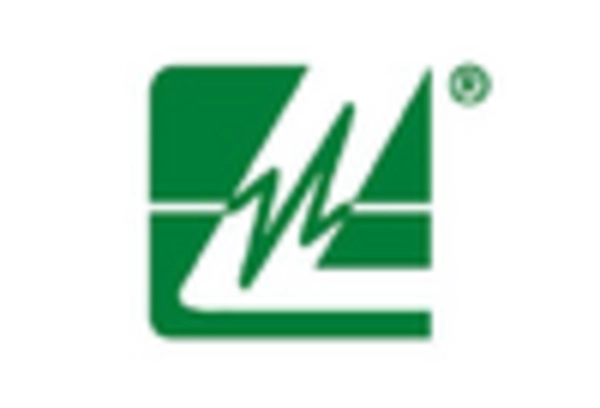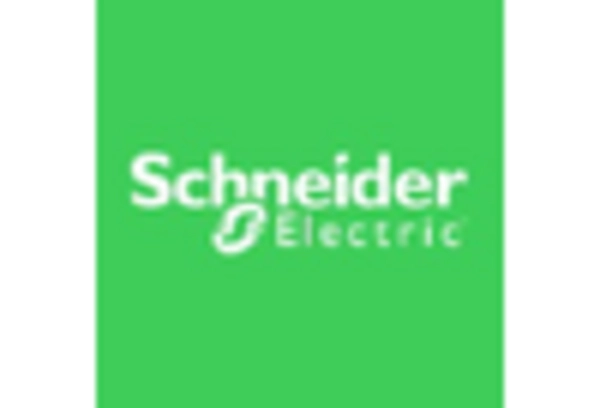The electric fuse market is currently characterized by a dynamic competitive landscape, driven by technological advancements and increasing demand for safety in electrical systems. Key players such as Schneider Electric (FR), Eaton Corporation (US), and Littelfuse (US) are at the forefront, each adopting distinct strategies to enhance their market presence. Schneider Electric (FR) emphasizes innovation through its focus on smart grid technologies, while Eaton Corporation (US) is actively pursuing mergers and acquisitions to expand its product portfolio. Littelfuse (US), on the other hand, is concentrating on regional expansion, particularly in North America, to capitalize on the growing demand for electric fuses in various applications. Collectively, these strategies contribute to a competitive environment that is increasingly focused on technological differentiation and customer-centric solutions.
In terms of business tactics, companies are localizing manufacturing and optimizing supply chains to enhance efficiency and reduce costs. The market structure appears moderately fragmented, with several players vying for market share. However, the influence of major companies is significant, as they set industry standards and drive innovation. This competitive structure allows for a diverse range of products and solutions, catering to various customer needs while fostering a climate of continuous improvement.
In October 2025, Eaton Corporation (US) announced the acquisition of a leading manufacturer of electric fuses, which is expected to bolster its position in the market significantly. This strategic move not only enhances Eaton's product offerings but also allows for greater integration of advanced technologies into its existing portfolio. The acquisition is likely to provide Eaton with a competitive edge, enabling it to respond more effectively to the evolving demands of the market.
In September 2025, Littelfuse (US) launched a new line of environmentally friendly fuses designed to meet the growing demand for sustainable solutions. This initiative reflects a broader trend within the industry towards sustainability and aligns with regulatory pressures for greener products. By prioritizing eco-friendly innovations, Littelfuse positions itself as a leader in sustainability, potentially attracting a new customer base that values environmental responsibility.
In August 2025, Schneider Electric (FR) unveiled a digital platform aimed at enhancing the monitoring and management of electrical systems. This platform integrates AI and IoT technologies, allowing for real-time data analysis and predictive maintenance. The introduction of such advanced solutions indicates a shift towards digitalization in the electric fuse market, where companies are leveraging technology to improve operational efficiency and customer engagement.
As of November 2025, the electric fuse market is witnessing trends that emphasize digitalization, sustainability, and the integration of AI technologies. Strategic alliances are becoming increasingly important, as companies collaborate to enhance their technological capabilities and market reach. The competitive landscape is evolving, with a noticeable shift from price-based competition to a focus on innovation, technology, and supply chain reliability. This transition suggests that future differentiation will hinge on the ability to deliver advanced, reliable solutions that meet the complex needs of customers.

















Leave a Comment